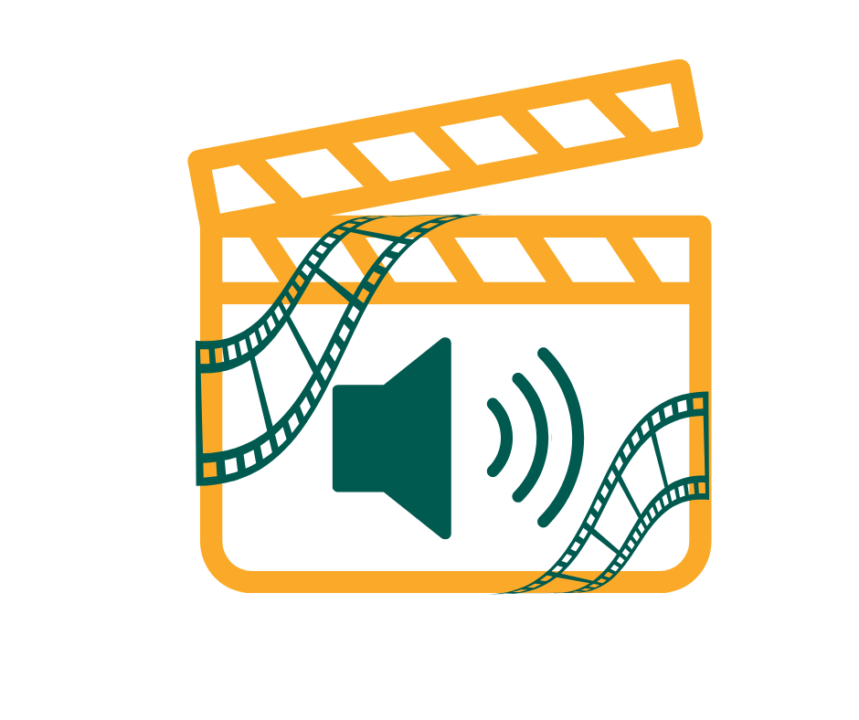Accessibility is a crucial aspect of media consumption that is often overlooked. While many of us take for granted the ability to see and hear what is presented on screen, individuals with visual impairments face barriers in accessing the same content. This disparity not only hinders their ability to fully enjoy and engage with media, but it also perpetuates the exclusion of a large portion of society.
Table of Contents
The Importance of Accessibility in Media
There are over 1 billion people worldwide with some form of disability, making up around 15% of the global population. This means that a significant portion of society may face barriers to accessing media content without proper accommodations. Accessibility is not just a matter of convenience but a fundamental human right that promotes inclusivity and diversity. It allows for the representation and recognition of diverse perspectives and experiences, creating a more equitable society.
Accessibility benefits not only individuals with disabilities but also their families, friends, and caretakers. By making media accessible, we can foster a sense of community and understanding among different groups in society. This is particularly important in the entertainment industry, where media has the power to shape attitudes and perceptions towards marginalized communities. By incorporating accessibility measures such as audio description, we can promote positive representation and social inclusion.
Understanding Audio Description
Audio description is a valuable tool that provides individuals with visual impairments access to media content. This form of accessibility involves narrating the important visual elements of a movie, TV show, or live event, allowing those who are unable to see them to fully understand and enjoy the content.

What is audio description?
Audio description, also known as video description or descriptive narration, is an additional audio track that provides verbal descriptions of visual information in media for people with visual impairments. It narrates important visual elements such as actions, gestures, and scene changes that are not communicated through dialogue or sound effects. This narration is inserted during pauses in dialogue or sound to avoid interfering with the original audio, allowing viewers to hear both the description and dialogue simultaneously. Audio description aims to make media content more accessible and inclusive for individuals who are blind or have low vision.
How does audio description work?
Audio description works by providing a verbal narration of important visual elements in media. This narration is carefully crafted to describe the essential visual information without interrupting or overlapping with the original audio. Audio describers must have a thorough understanding of the story, characters, and visuals in order to effectively convey the key elements to the audience. The audio description track is typically added during post-production and can be accessed by viewers through a secondary audio channel.

How to Add Audio Description to Your Videos
Learn moreWhy is audio description important for inclusivity?
Audio description plays a crucial role in making media accessible and inclusive for individuals with visual impairments. It allows them to fully experience and enjoy various forms of media, including movies, TV shows, and streaming content. By providing verbal descriptions of visual elements, audio description enables those with visual impairments to follow the plot, understand character interactions, and visualize settings. This promotes inclusivity and equal access to media for all individuals, regardless of their abilities.
Key components of an audio description
The key components of an audio description include the visual elements being described, the timing and placement of the descriptions, and the language used to convey the information. The visual elements may range from simple actions and gestures to complex settings and character expressions. The descriptions must be placed strategically during pauses in dialogue or sound to avoid overlap and confusion. The language used should be concise, clear, and objective to provide an accurate representation of the visuals without adding personal interpretations. These key components are essential for creating an effective audio description that enhances the viewing experience for individuals with visual impairments.
The Impact of Audio Description
While audio description primarily benefits individuals with visual impairments, it also has a wider impact on promoting inclusivity and diversity in media. By making content accessible to those with disabilities, we create a more equal playing field for all individuals to enjoy and engage with popular movies, TV shows, and live events.
Benefits for individuals with visual impairments
The primary impact of audio description is on individuals with visual impairments, who are often excluded from fully experiencing media content due to the lack of accessibility features. By providing verbal descriptions of visual elements, audio description allows them to follow along with the plot, understand character interactions, and visualize the settings. This not only enhances their viewing experience but also promotes independence and inclusivity. Audio description has been proven to increase engagement and comprehension for individuals with visual impairments, making it an essential tool for equal access to media.
Enhancing the viewing experience for everyone
One of the surprising benefits of audio description is its impact on viewers without visual impairments. By providing additional context and details, audio description enhances the overall viewing experience for everyone. It allows viewers to fully understand the plot and characters, especially in complex or fast-paced scenes. Additionally, audio description can help individuals with learning disabilities or those who are not fluent in the language of the media. This makes audio description a valuable tool for promoting inclusivity and diversity in media.

4 easy ways to make video content accessible to everyone
Find out moreCompliance with accessibility regulations
With the growing recognition of the importance of accessibility, many countries have implemented laws and regulations to ensure equal access to media for individuals with disabilities. This includes requirements for audio description in television and movie productions. By providing audio description, content producers are not only promoting inclusivity but also complying with these accessibility regulations. This helps create a more inclusive society where individuals with disabilities can fully participate in and enjoy various forms of media. Overall, audio description has a significant impact on promoting accessibility and inclusivity for all individuals. By understanding and implementing this important tool, we can create a more inclusive society where everyone can equally enjoy media content.
How Audio Description is Created
Audio description is a specialized technique used to make media content accessible for individuals with visual impairments. Trained audio describers provide verbal descriptions of important visual elements in movies and television shows, allowing individuals with disabilities to follow along and fully experience the content.
The role of audio describers
Audio description is a specialized skill that requires both technical and creative abilities. Audio describers are responsible for crafting the narration that describes key visual elements in media content. They must have a deep understanding of the story, characters, and visuals in order to effectively convey the information to the audience. Audio describers also play a crucial role in ensuring the accuracy and quality of the audio description track. They are often hired by production companies or accessibility services to create audio descriptions for various forms of media.
Techniques and guidelines for effective audio description
Creating effective audio description involves utilizing specific techniques and following guidelines to ensure accuracy and clarity. Some common techniques include pausing during dialogue or sound to avoid overlap, using concise and objective language, and describing only pertinent visual elements. It is also important for audio describers to understand the intended audience and adapt their descriptions accordingly. Guidelines provided by organizations like the American Council of the Blind and the Described and Captioned Media Program can help ensure consistency and quality in audio description production.

Digital accessibility and WCAG 2.1 standards
Learn moreChallenges in audio description production
Despite its importance, audio description production presents several challenges. One of the main challenges is finding a balance between providing enough information for individuals with visual impairments without interrupting the viewing experience for those without visual impairments. Additionally, creating audio descriptions for fast-paced or complex scenes can be challenging and requires careful planning and execution. Technical issues such as incorrect timing or placement of descriptions can also affect the overall effectiveness of audio description. However, with proper training and understanding of the audience, these challenges can be overcome to create high-quality audio descriptions.
Audio Description in Movies and Television
Audio description has become an essential tool in making movies and television shows accessible for individuals with visual impairments. In addition to providing audio description tracks, there have been other accessibility initiatives in movies and television that benefit individuals with disabilities. For instance, some movie theaters now offer special screenings with open captions and audio descriptions, making it easier for individuals with hearing or visual impairments to attend. In addition, some television networks have started including audio description tracks for their live broadcasts of major events such as awards shows and sports games. This not only benefits those watching at home but also promotes inclusivity and accessibility for live events. These initiatives show a growing awareness and commitment to making media content more accessible for all individuals. The use of audio description can also lead to a larger audience for these productions, as it allows individuals with visual impairments to fully engage with and understand the storyline.
Accessibility initiatives in movies and television
Audio description has become increasingly common in mainstream cinema and television. This is largely due to the efforts of disability rights advocates and organizations, as well as advancements in technology that make audio description easier to produce and distribute. For example, in 2019 Disney released their live-action remake of “The Lion King” with an audio description track, making it accessible to individuals with visual impairments. Similarly, the popular TV show “Game of Thrones” also provided audio descriptions for its final season, allowing fans with visual impairments to fully enjoy the show.
Audio Description on Video Streaming Platforms
With the rise of video streaming platforms, accessibility has become more prevalent in mainstream media. This includes the availability of audio description tracks for a wide range of content on popular streaming services such as Netflix, Amazon Prime, and Disney+.
Accessibility initiatives by popular streaming services
In recent years, popular video streaming platforms such as Netflix, Amazon Prime, and Disney+ have made significant efforts to improve accessibility for individuals with disabilities. This includes providing audio description tracks for a wide range of content, including both original and licensed productions. These initiatives not only benefit individuals with visual impairments but also promote inclusivity and diversity in media. As the popularity of video streaming continues to grow, these accessibility efforts have a significant impact on making media content more accessible for all.
Features and availability of audio description
Most major video streaming platforms now offer the option to enable audio description tracks when available. This allows viewers to easily access audio descriptions without having to purchase separate audio description devices or services. Some platforms also provide features such as customizable playback speed and audio description settings, allowing individuals to adjust the viewing experience according to their preferences. However, there is still room for improvement in terms of availability and consistency of audio descriptions on different platforms, which can vary depending on region and licensing agreements. As technology continues to advance, it is important for streaming services to prioritize accessibility and continue to expand their audio description offerings.
Making Media Content Accessible
Audio description plays a crucial role in making media content more accessible for individuals with visual impairments. Trained audio describers utilize specific techniques and guidelines to create accurate and effective descriptions that enhance the viewing experience for those with disabilities. With the growth of audio description in mainstream cinema and the efforts of streaming services to provide accessibility features, there is now more options available for individuals with visual impairments to access popular movies and TV shows. By prioritizing accessibility, we can create a more inclusive media landscape that benefits everyone.